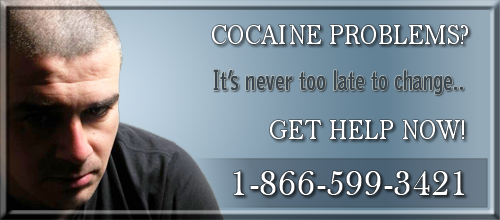About Cocaine
- What is Cocaine
- Effects of Cocaine
- Who Uses Cocaine
- Cocaine Statistics
- Cocaine Information
- Facts About Cocaine
- Dangers of Cocaine Use
- Signs of Cocaine Use
- About Cocaine
- Stages of Cocaine Addiction
- Cocaine Withdrawal
- Cocaine Overdose
- Cocaine Treatment
- Snorting Cocaine
- Smoking Cocaine
- Injecting Cocaine
- Crack Cocaine
- Using Cocaine with Alcohol
- Cost of Cocaine
- Cocaine Side Effects
- Cocaine Street Names
- Drug Tests for Cocaine
- History of Cocaine
- Cocaine User Pictures
- Cocaine Images

Who Uses Cocaine?
 Who uses cocaine? Powder cocaine is quite expensive to use regularly, so most powder cocaine users are relatively well off financially. While not a ‘club drug’, use of powder cocaine is not uncommon among those attending dance clubs and events, and other upscale nightclubs. Crack, while equally if not more expensive in the long run, produces powerful effects for a smaller initial investment. Crack users come from all classes, but the drug is especially associated with troubled urban areas.
Who uses cocaine? Powder cocaine is quite expensive to use regularly, so most powder cocaine users are relatively well off financially. While not a ‘club drug’, use of powder cocaine is not uncommon among those attending dance clubs and events, and other upscale nightclubs. Crack, while equally if not more expensive in the long run, produces powerful effects for a smaller initial investment. Crack users come from all classes, but the drug is especially associated with troubled urban areas.
Not everyone who uses cocaine becomes addicted, but if they do, it can be one of the hardest drug habits to break. People who become addicted to cocaine lose control over their use of the drug. They feel a strong need for cocaine, even when they know it causes them medical, psychological and social problems. Getting and taking cocaine can become the most important thing in their lives.
Smoking crack, with its rapid, intense and short-lived effects, is most addictive. However, any method of taking cocaine can lead to addiction. The amount of drug used, and how often people use the drug, often has an effect on whether the person becomes addicted. Symptoms of cocaine withdrawal can include exhaustion, extended and restless sleep or sleeplessness, hunger, irritability, depression, suicidal thoughts and intense cravings for more of the drug. The memory of cocaine euphoria is powerful, and brings a strong risk of relapse to drug use.
Let’s continue to explore at the question, who uses cocaine? The effects of both powder cocaine and crack are short, meaning that addicts need to consume the drug quite frequently to remain high. Crack users tend to consume in binges, where the drug is consumed continually until all resources are exhausted or sleep-deprivation begins to generate great anxiety and paranoia. Periods of time may elapse between binges. Crack provides an initial rush for a few seconds, followed by ten minutes of intense stimulation, tailing off over time. Snorted cocaine provides stimulation for between half a hour and a hour and a half. The short-acting duration of this drug may be associated with crimes where cash is acquired immediately, such as robbery and prostitution.
Cocaine and crack are stimulants, raising the pulse rate and blood pressure to a very great degree, and causing the pupils to expand. The drug gives a surge of mental and physical energy, so users may appear talkative and fidgety. Coming down from the drug may result in severe depression, even suicidal depression. Long-term powder cocaine users cause chronic trauma to the nasal septum, and tend to sniff a lot, whereas crack users cough. Long-term cocaine users tend to lose weight, which can give them a gaunt, wiry look. Jaw-clenching is common, as it is with other stimulant-type drugs, such as ecstasy.
Need to know more about who uses cocaine? In 1997, an estimated 1.5 million Americans (0.7 percent of those age 12 and older) were current cocaine users, according to the 1997 National Household Survey on Drug Abuse (NHSDA). This number has not changed significantly since 1992, although it is a dramatic decrease from the 1985 peak of 5.7 million cocaine users (3 percent of the population).
Based upon additional data sources that take into account users underrepresented in the NHSDA report on who uses cocaine, the Office of National Drug Control Policy estimates the number of chronic cocaine users at 3.6 million. Adults 18 to 25 years old have a higher rate of current cocaine use than those in any other age group. Overall, men have a higher rate of current cocaine use than do women. Also, according to the 1997 NHSDA, rates of current cocaine use were 1.4 percent for African Americans, 0.8 percent for Hispanics, and 0.6 percent for Caucasians. Crack cocaine remains a serious problem in the United States.
The NHSDA estimated the number of current crack users to be about 604,000 in 1997, which does not reflect any significant change since 1988. The 1998 Monitoring the Future Survey, which annually surveys teen attitudes and recent drug use, reports that lifetime and past-year use of crack increased among eighth graders to its highest levels since 1991, the first year data were available for this grade.
The percentage of eighth graders reporting crack use at least once in their lives increased from 2.7 percent in 1997 to 3.2 percent in 1998. Past-year use of crack also rose slightly among this group, although no changes were found for other grades. Data from the Drug Abuse Warning Network (DAWN) showed that cocaine-related emergency room visits, after increasing 78 percent between 1990 and 1994, remained level between 1994 and 1996, with 152,433 cocaine-related episodes reported in 1996.
